Mullein is a very common wild weed that is medicinal as well as edible — it’s actually a wonderful wild weed to have in your medicine cabinet. Here are some tips on foraging mullein and ways to use it!
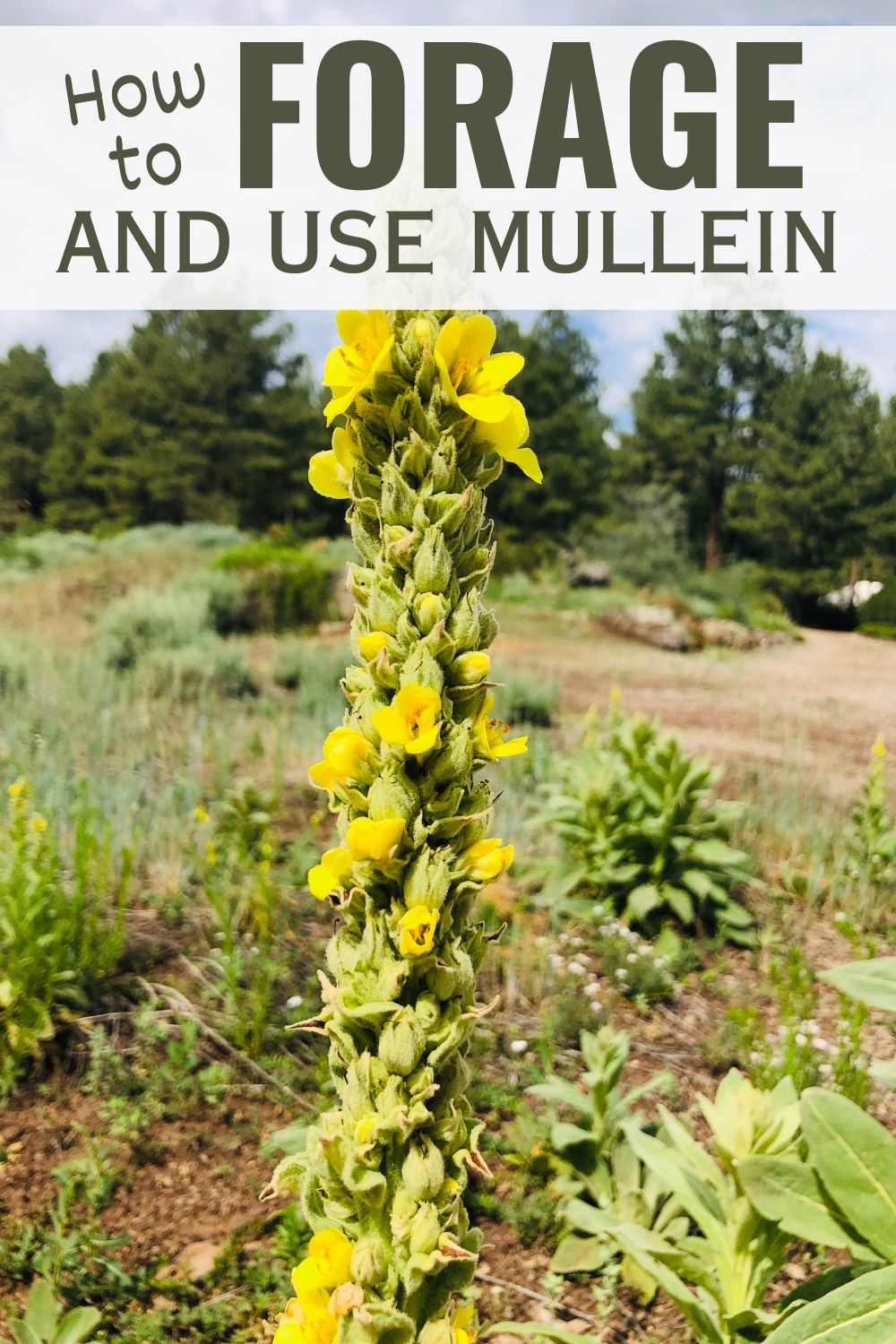
Common Mullein growing in the mountains of Northern Arizona
Mullein is certainly one of my favorite “wild weeds” to have — it’s also hard to miss, even more so when it’s in flowering stage.
Easily grown from seed, mullein stays low to the ground the first year, storing energy in its tap root. By the second year, it starts to explode – it can grow to be a huge, 6-8 foot stalk of bright yellow flowers.
It is within those yellow flowers that much of the mullein medicine lies.
What is Mullein?
Mullein, also known as Verbascum, is a genus of over 450 species of plants native to Asia, North Africa and Europe. Mullein is part of the snapdragon family. Most are biennial perennials, but a few are annuals.
Most are herbaceous weeds, but some may have a shrub-like appearance.
Parts of Mullein
While you can consume the flowers, you can also use them to make an herbal-infused oil for a host of bodily issues, most commonly ear infections. The flowers are edible, and can be added to salads and as a garnish to culinary dishes.
The leaves are used in respiratory teas. They are incredibly effective for bronchial complaints. While they can be eaten raw, they aren’t very good (believe me… I have tried! I can attest to that!) — for some, the leaves may be irritation to consume as well.
The root of the mullein plant is one of the best treasures. Historically, it was used as a remedy for back pain – which is why it’s powerful when used to make a tincture. If you wish to use the root, it must be harvested in the autumn of the first year of the plant – which requires you to be able to identify the plant prior to it going to flower (the plant usually flowers the second year).
In most cases, when it comes to Mullein, the leaves, roots and flowers are used for tea and medicinal purposes.
Foraging for Mullein or Growing from Seed
Mullein can be grown from seed — but you can also find it growing in the wild, as well. (Seeds can be picked up online through Etsy, or Annie’s Heirlooms, Baker Creek or even on Amazon).
For those of us in the United States, Mullein typically refers to the biennial — Verbascum thapsus, or, Common Mullein.
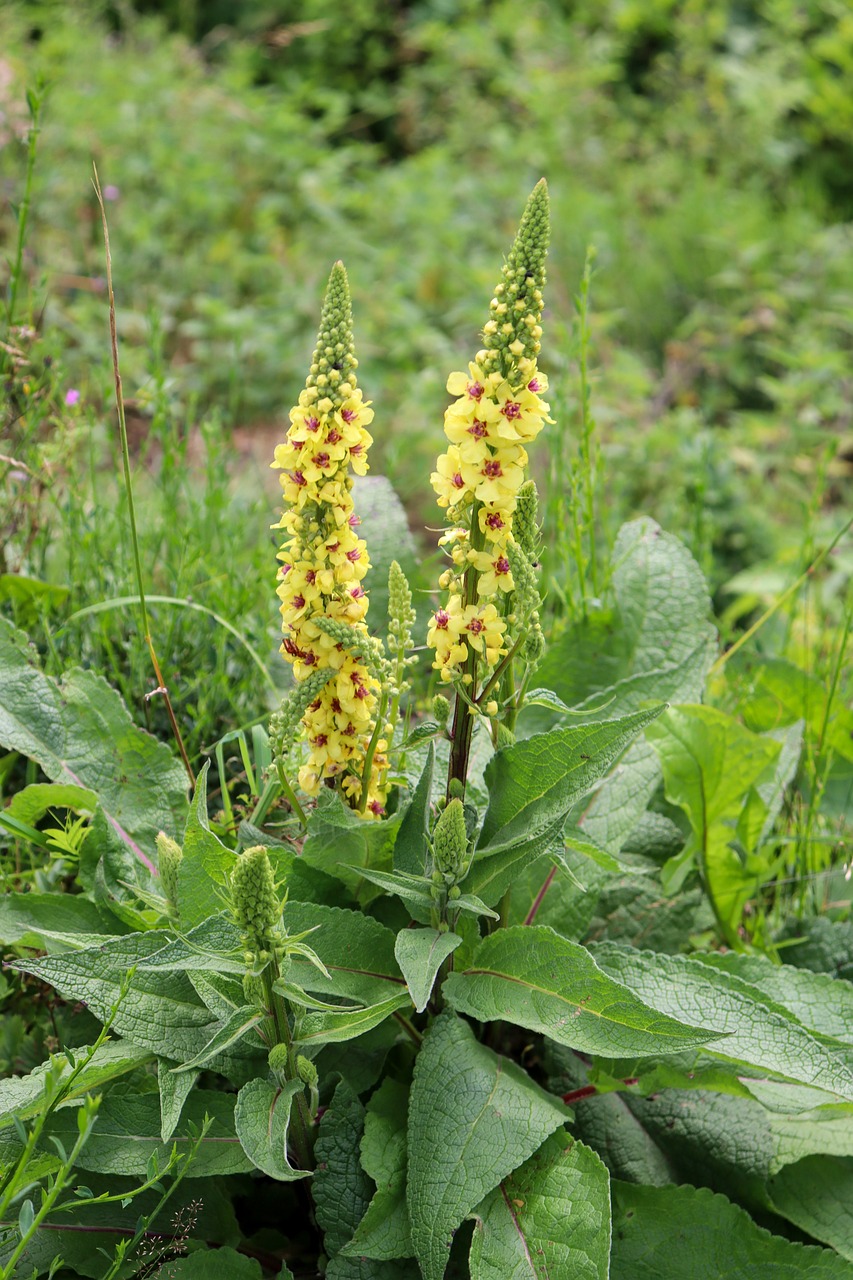
This variety of Mullein naturalized through the Americas, as well as Australia. You may also find it referred to under any of the following names to include:
- Poor Man’s Blanket
- Blanket Mullein
- Velvet Mullein
- Greater Mullein
- Feltwort
- Hig Candlewick
- Great Mullein
And a lesser known name… out here in my area is “Cowboy Toilet Paper” (for obvious reasons!)
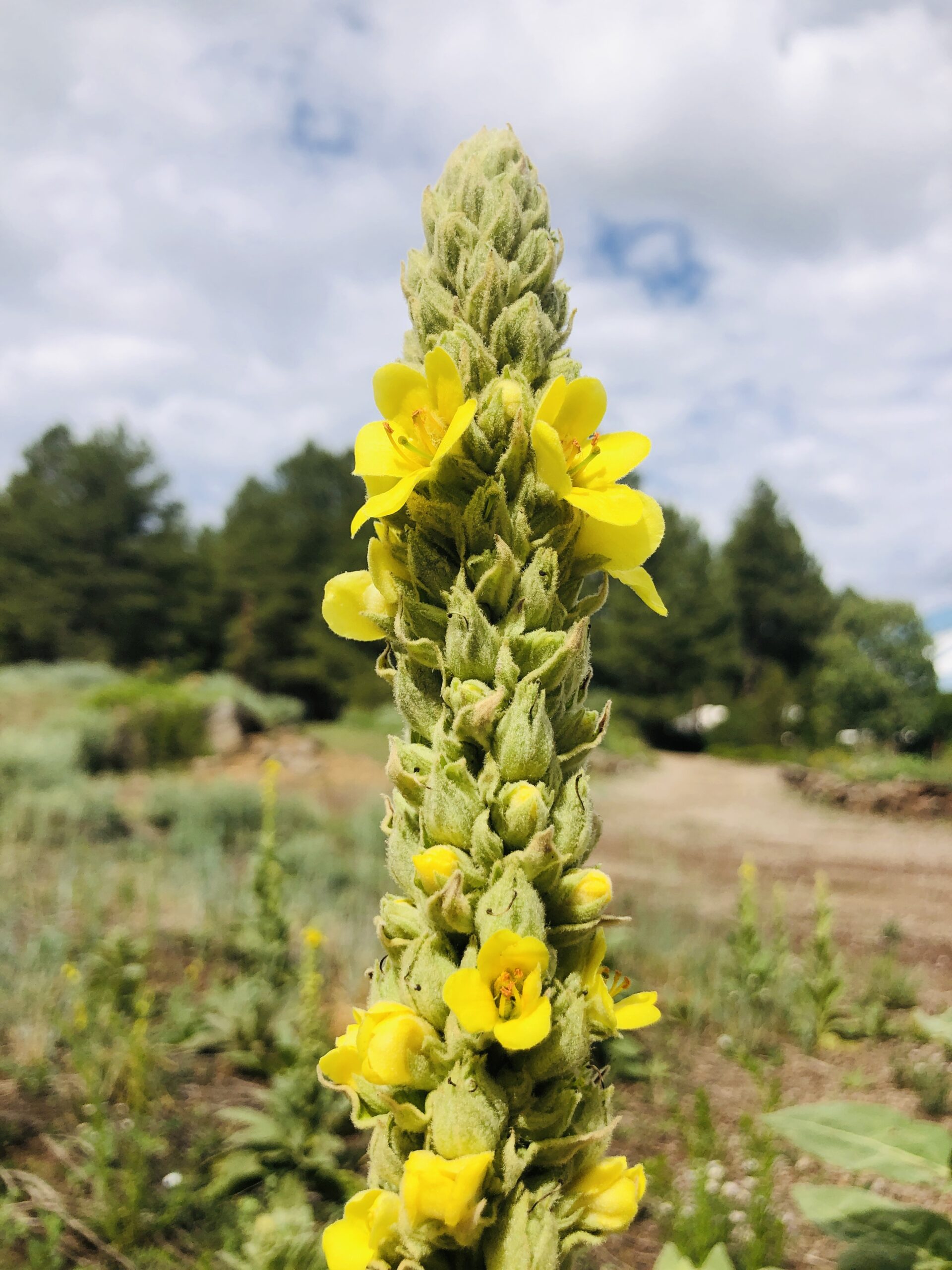
Common Mullein growing in Northern Arizona
Tips for Foraging and Identifying Mullein
If you plan on using Mullein for tea or medicinal purposes, I would suggest growing it in your home garden. If you forage for Mullein, avoid foraging for it in contaminated areas like roadsides where pollution is more prevalent.
You can forage for Mullein in the late spring and summer – overwintered plants will send out leaves from the taproot as the weather starts to get warmer.
Seeds will germinate, and the plant will produce leaves the first year as it developed a greater taproot. The second year, Mullein will start to produce flowers. The seeds will only germinate if and when they are exposed to lights.
You may, in some instances, notice that Mullein crops up in recently disturbed soils. This is because fallen “seeds” may be buried and hidden from the light until the soil is distrurbed – at which time the seeds will be exposed to light and subsequently then germinate.
When the weather starts to cool down in the fall and winter, the leaves and the stem will die with any frost. The taproot will overwinter – and subsequently will send out new Mullein growth in the spring.
Mullein will be easier to spot when its in its second year as opposed to its first. During the second year, the Mullein plant will have a large rosette of fuzzy, furry leaves as the shrub grows up from the ground. Plants that are 2 years old will send large stems up as far as 6-8 feet in height that are loaded with beautiful yellow flowers.
While some species of the Mullein plant may have a variety of different colors, the Common Mullein we see here in North America has yellow flowers.
The leaves on the plant are quite large, too – they can reach up to 12 inches in length, and will be light green and furry/velvety. The leaves towards the top of the shrub-rosette are stalkless.
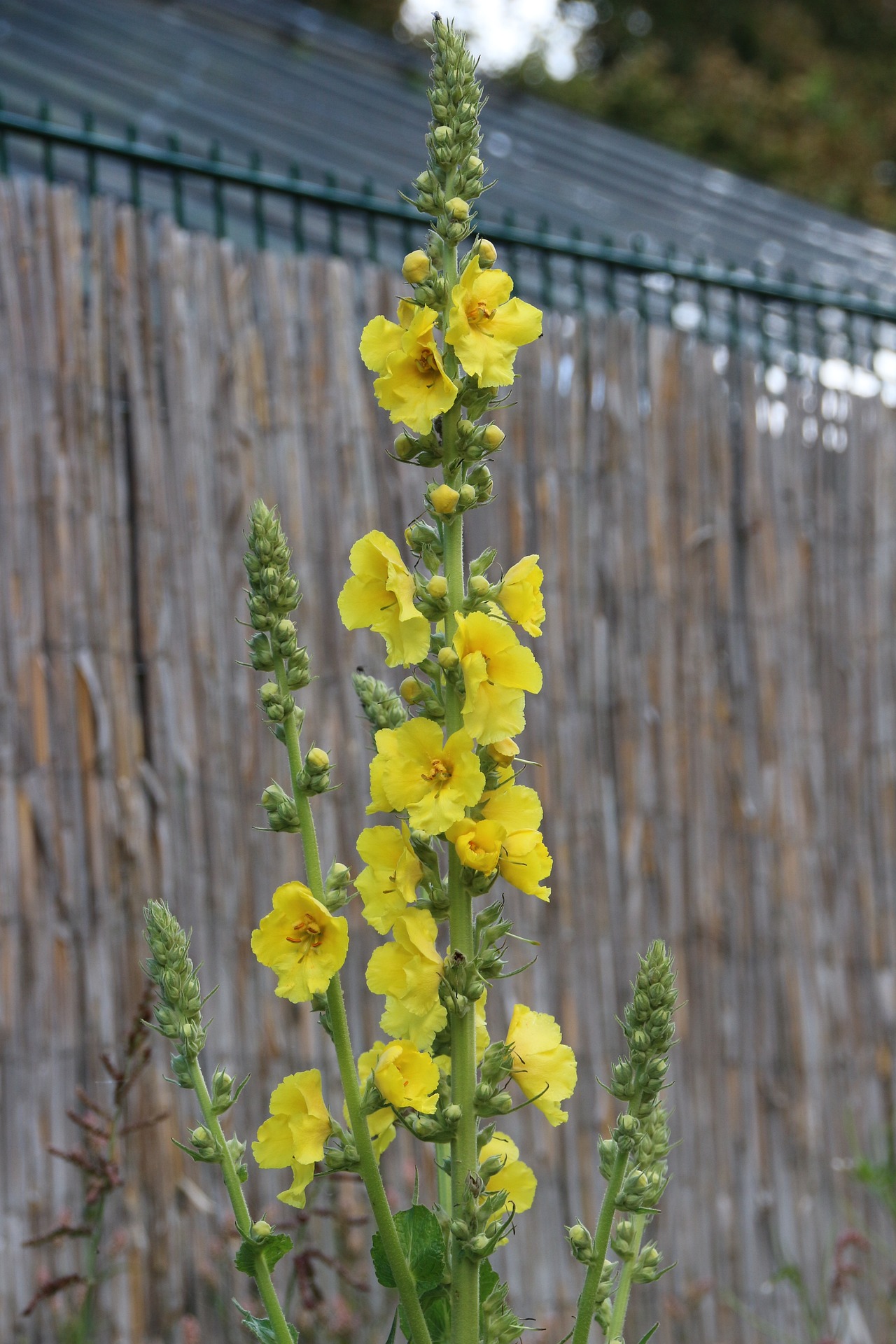
Common Mullein growing in my backyard garden
The flowers will be 3/4 – 1 inch in diameter, and have five petals, five stamens and 1 pistil. The taproot of the Mullein plant very very strong – it allows the plant to overwinter and withstand drought.
As a result, the root is very very deep and fibrous.
Once Mullein flowers, it produces tiny seed capsules 1/4 inch in size. These capsules can and will split open and release a large amount of seeds that are absolutely TINY, and also very toxic. They should not be consumed.
Uses for Mullein
Mullein is best used as a tea or in a medicinal tincture/preparation. While it is edible, and can be eaten if survival means consuming, let me just say one thing: it’s not the most tasty herb.
I will repeat: It’s definitely NOT a tasty herb! I’m often times the kind of person to shove things in my mouth while on the trail – Mullein is not that yummy!
Here are a few ways you can use Mullein:
- Use the flowers to create an infused oil. I typically follow the ratio of 1 part dried herb to 2 parts oil, but you an also use 1 part dried herb to 3-4 parts oil for an infusion that’s slightly less potent.
- Use the leaves, roots and flowers in ointments/salves, poultices and baths.
- Use the leaves to create infusions and tinctures.
- Pack the mullein flowers in sugar to make syrup – the sugar will draw the liquid out of the petals and help produce a syrup that’s great for coughs and congestion.
- Use the roots and leaves for medicinal purposes – dry thoroughly and smoke
One lesser known use for Mullein is how the Native American’s used to use Mullein for their rituals. They would thoroughly dry the stems and use them to make torches or candles.
To make torches/candles, they would dip the stem in wax repeatedly allowing a thick layer to build. The end result was a sort of torch that they would use for rituals, ceremonies or for everyday hunting and survival.
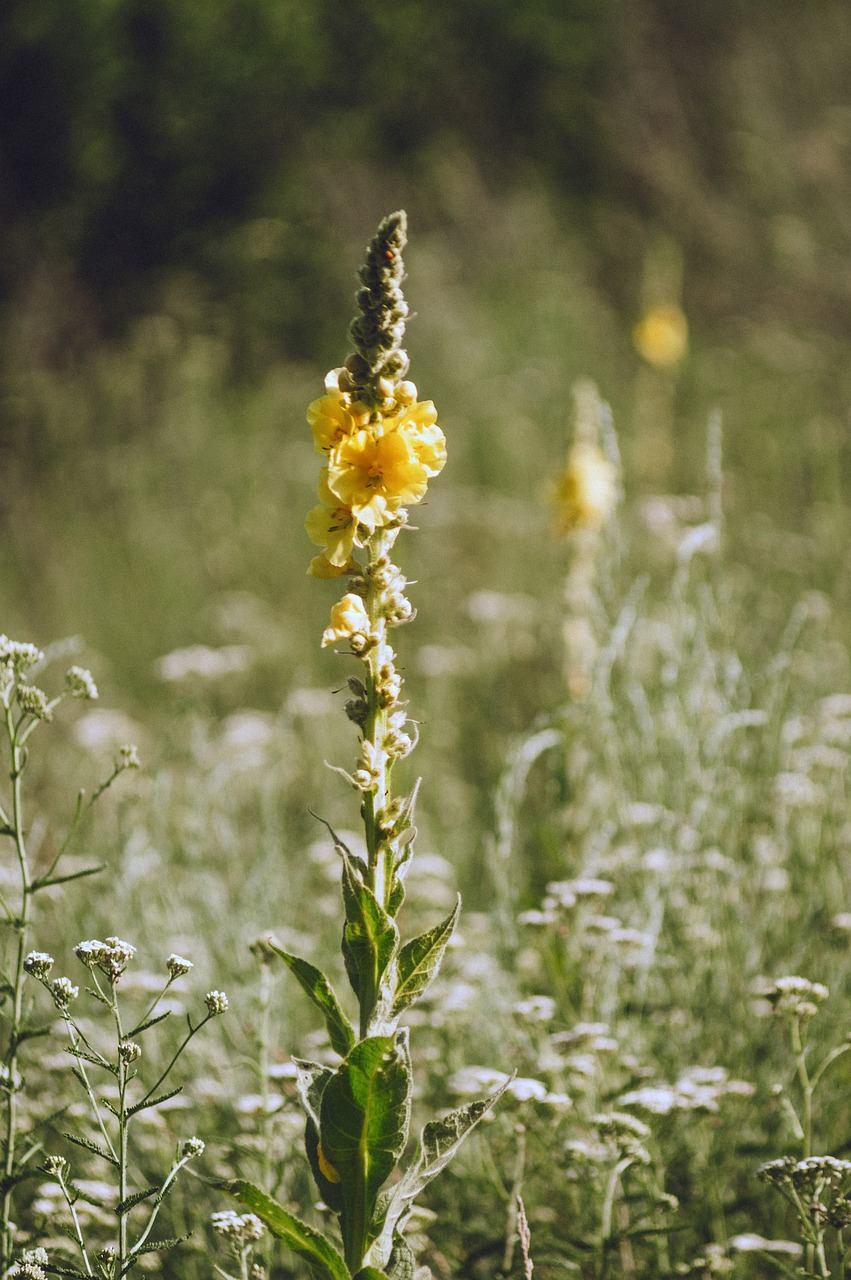
How I Love Using Mullein
My favorite way to use Mullein is by infusing it in a combination of sunflower and castor oil for 6-8 weeks. The end result, an herbal oil, is something that I use frequently to make a beautiful salve for skin. I do this with Mullein as well as Poke Root (see this Poke Root Salve), Creosote, Chaga Mushroom, Comfrey, and even Juniper.
Of course, I also love making tinctures with herbs too – and Mullein is no exception. By infusing the flowers in vodka, I can create a tincture that’s used for medicinal purposes. Of course, the hardest part is waiting – tinctures often take time to make and Mullein tincture is no exception.
I will admit – I don’t always have the gift of patience, unfortunately!
Patience with anything is critical – but making medicinal tinctures is a great way to learn the importance of being patient.
Have you ever used Mullein for tea or medicinally – as in a tincture or, syrup? Do you have a favorite method? Please share below in the comments. I’d love to learn what works best for you, too!
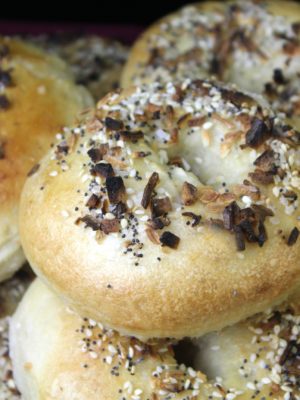
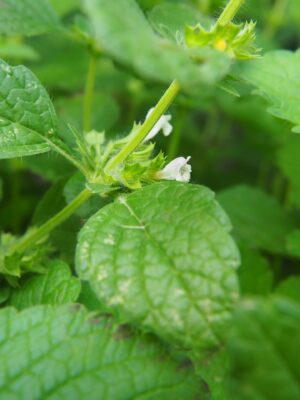
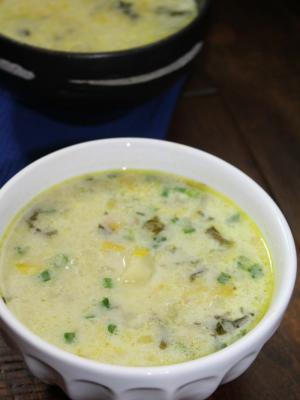
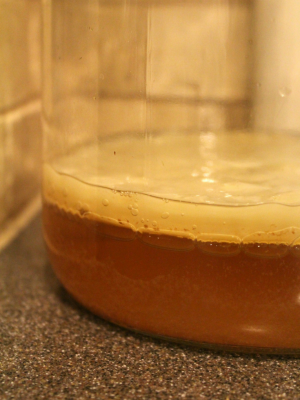
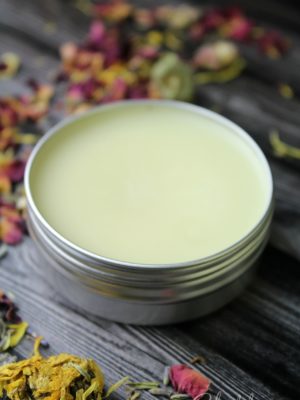
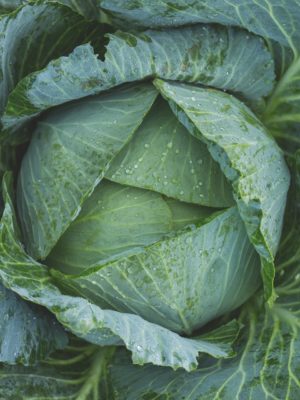

Leave a Reply